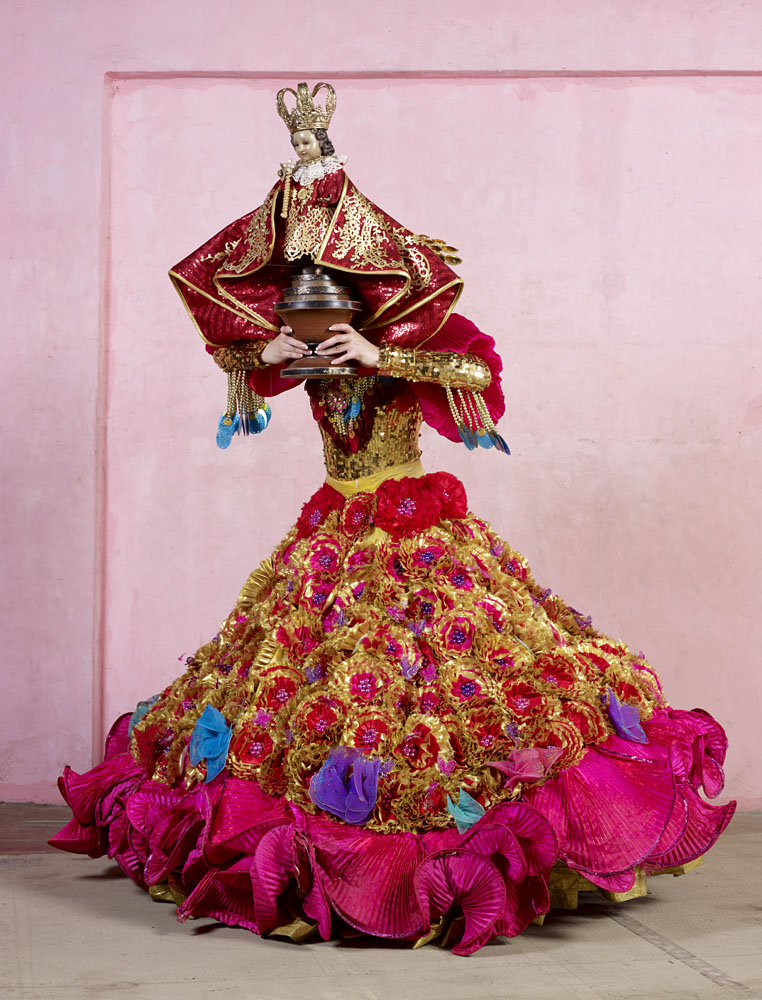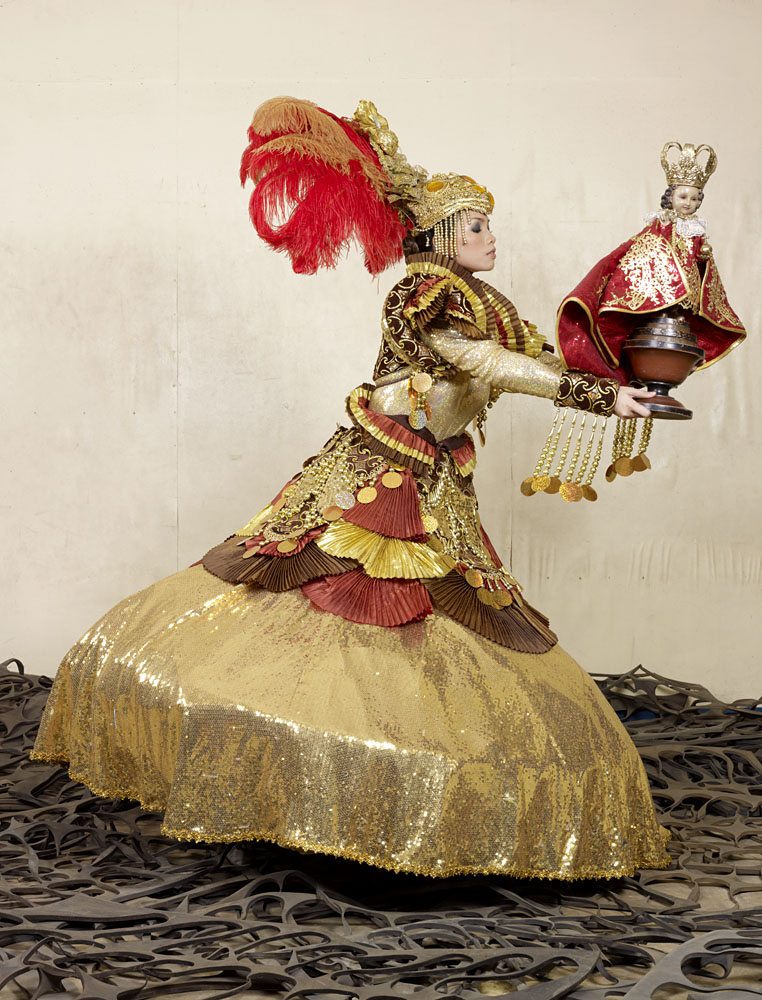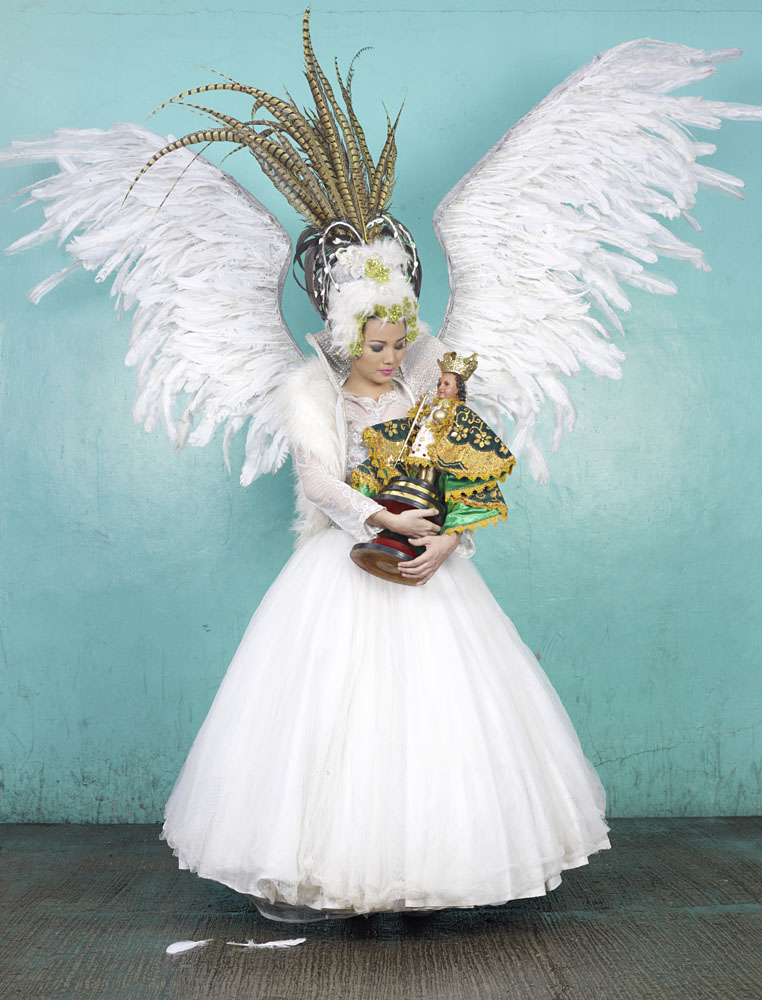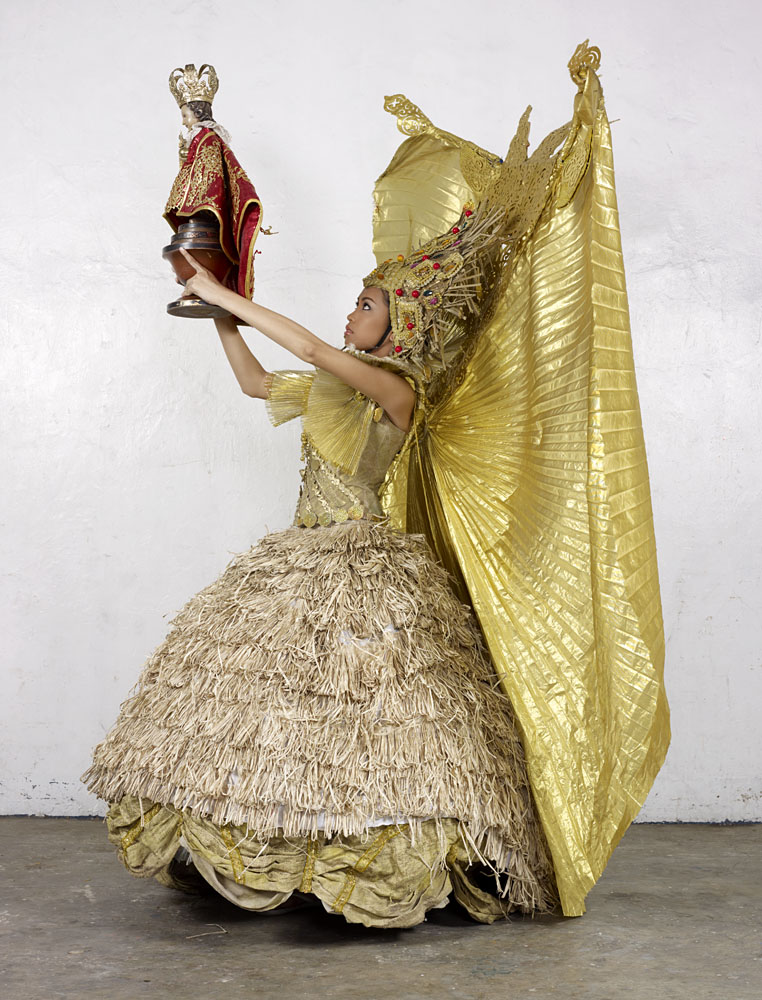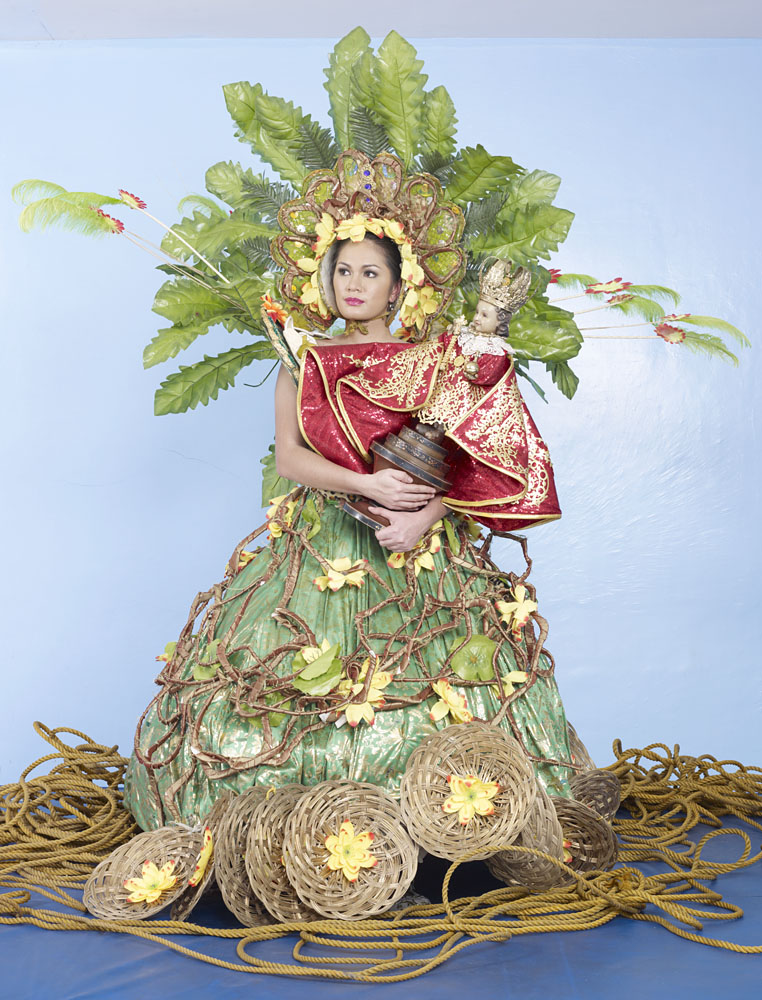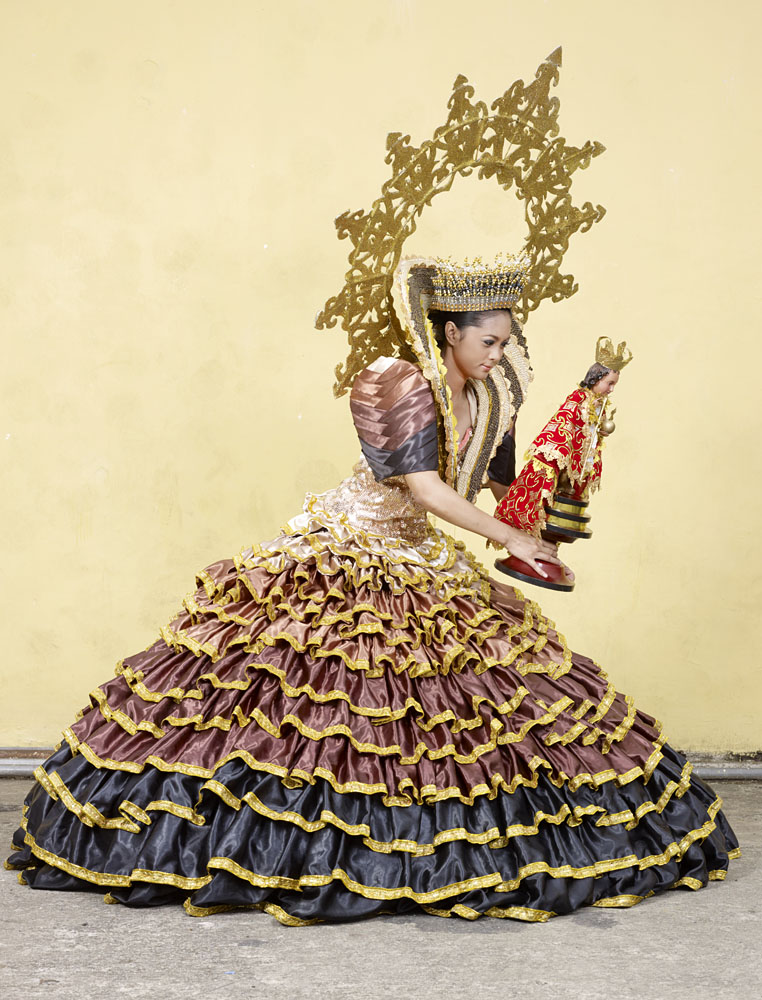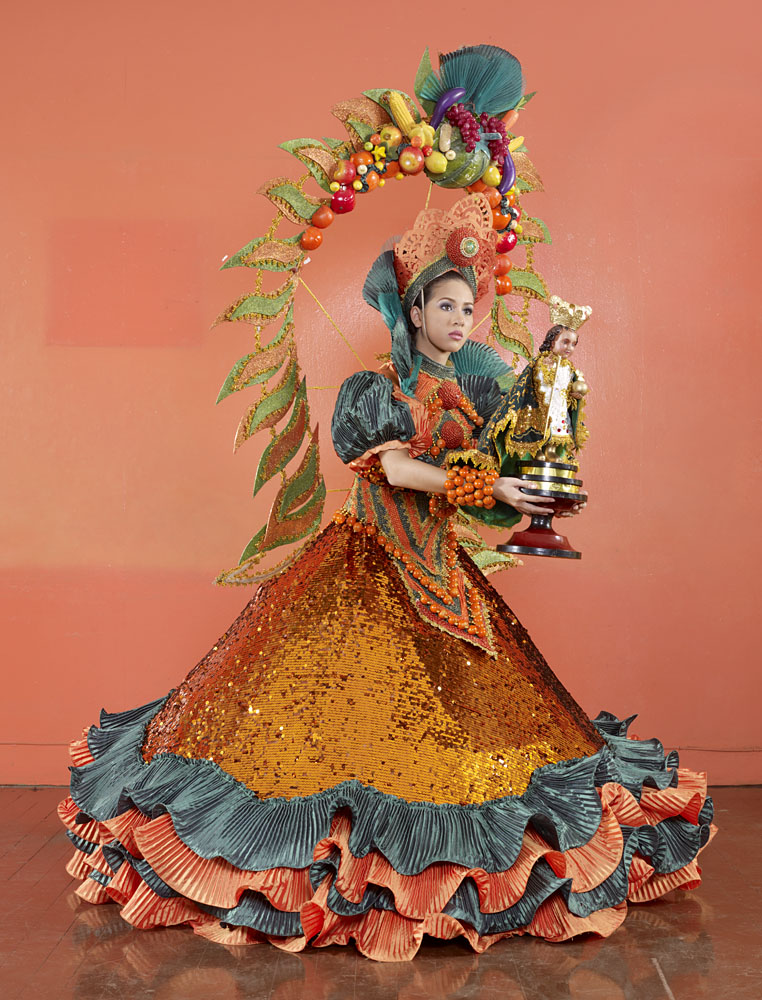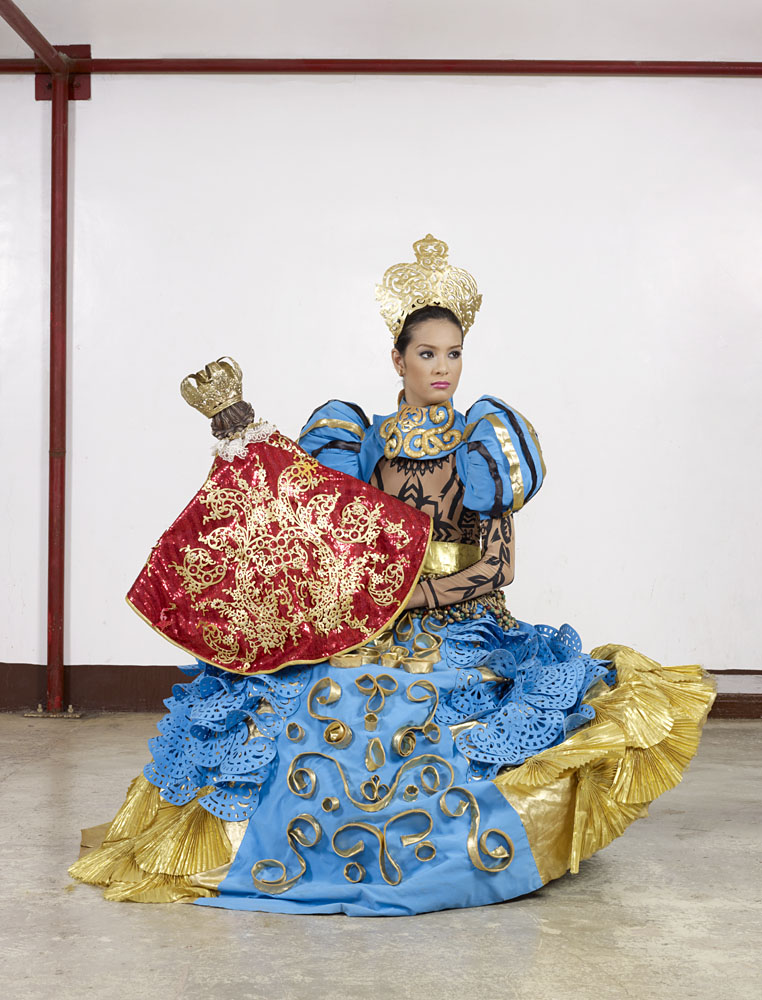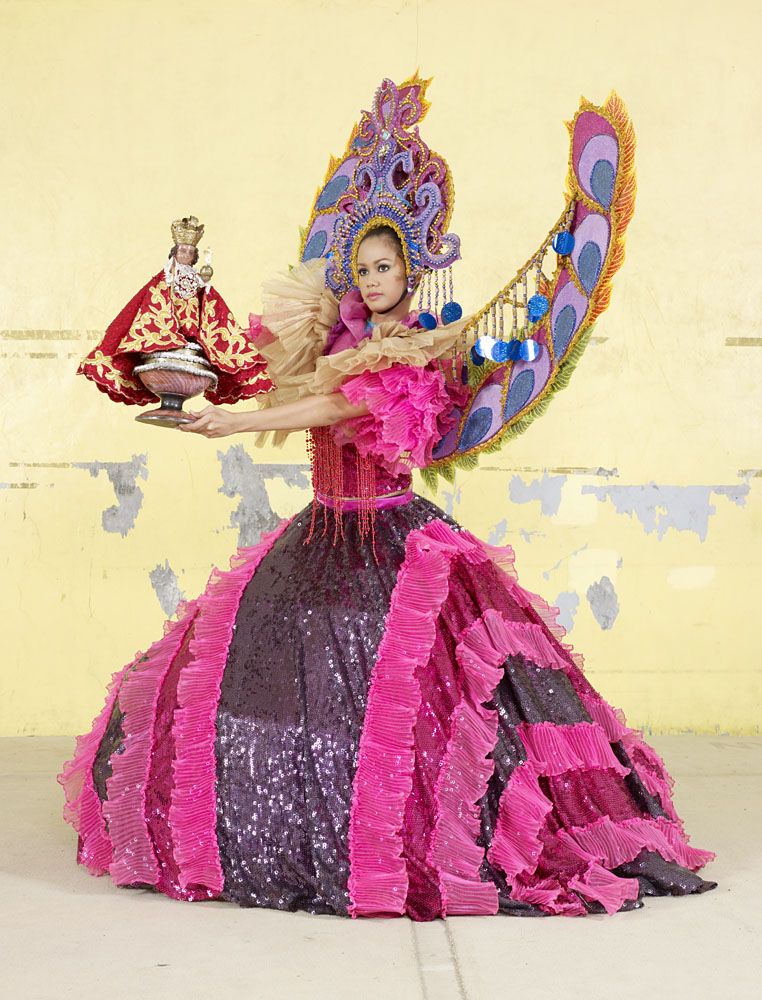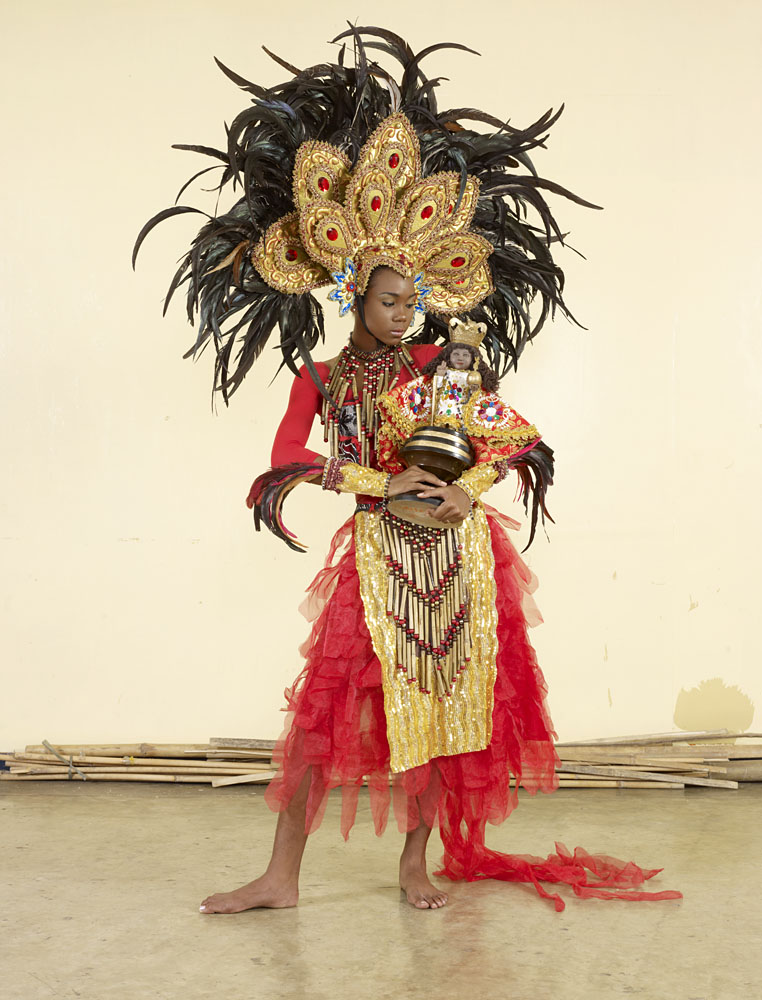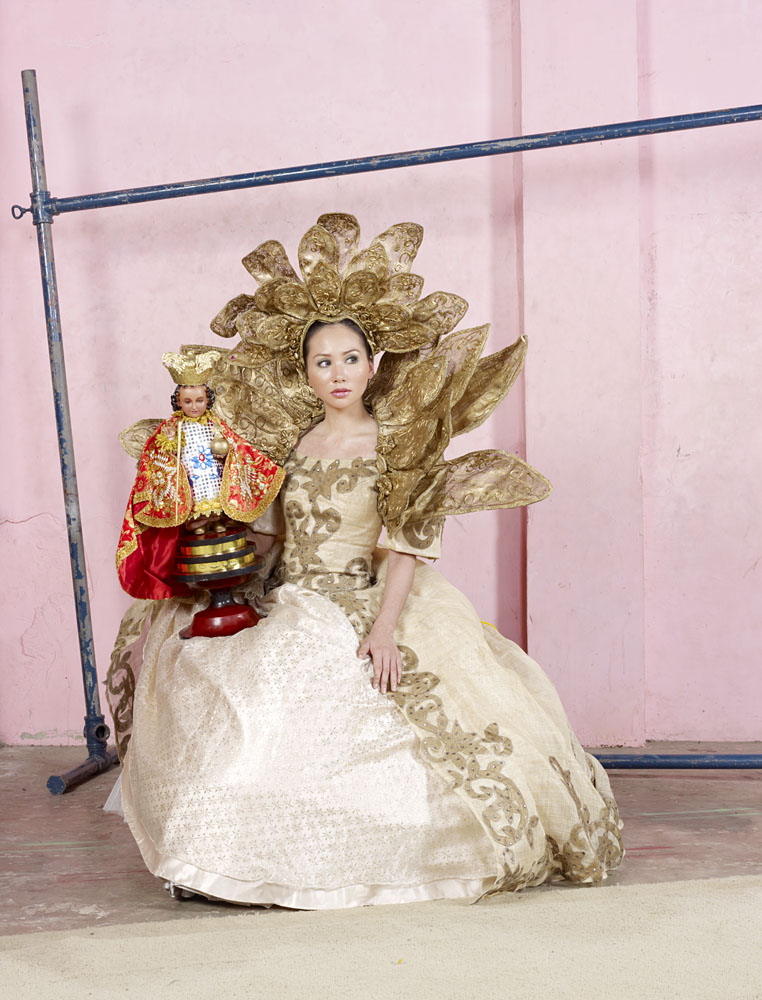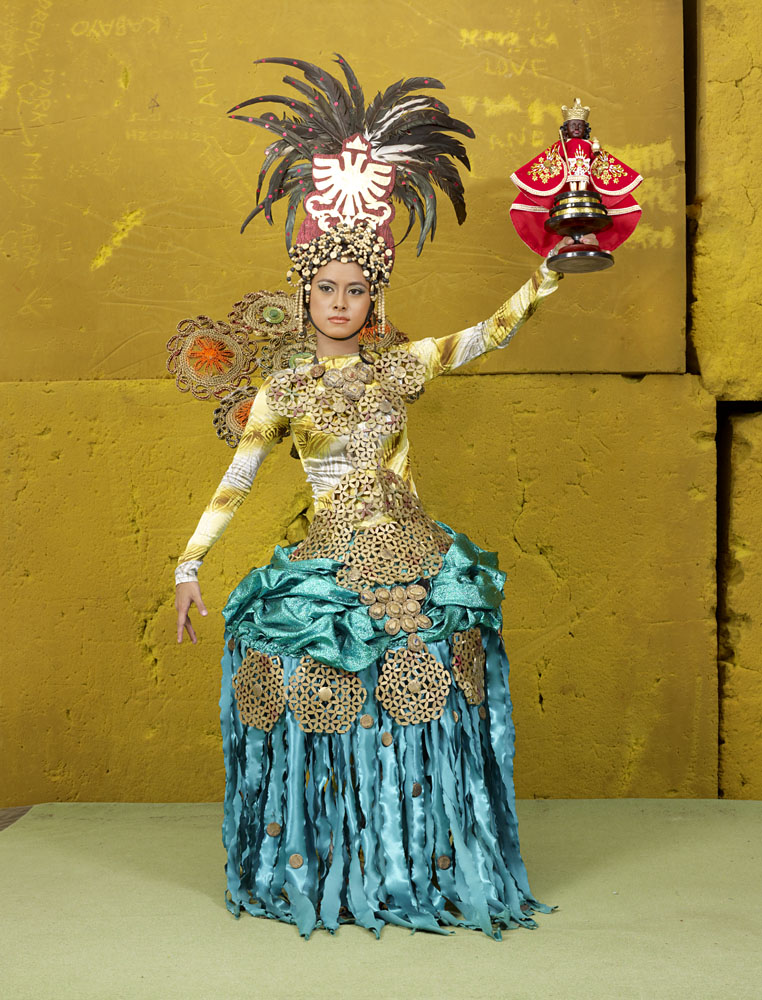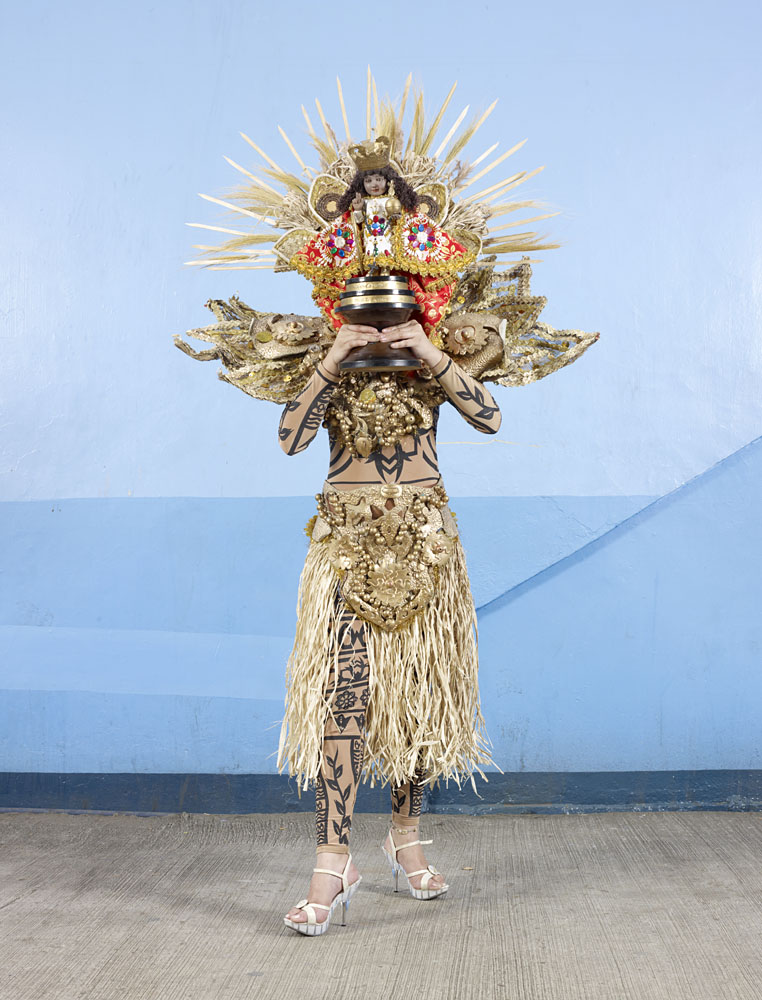Produced in the immediate aftermath of Wilder Mann, motivated by a commission from
the French Embassy in the Philippines and the Niépce Museum in Chalon sur Saône for the first Philippine Photography Festival in Manila, this series extends Charles Fréger’s work on the the staging of silhouettes. These “queens of Cebu” usually parade
usually in the context of the festival known as “Sinulog” of this island of the Philippines,
celebrating the Santo Niño. The “Sinulog”, whose name evokes the ebb and flow of water, is the dance practiced during the festival; the Santo Niño would have been introduced according to the history of Cebu in 1521, by Magellan himself, and would thus be the very first symbol that appeared on the island.
Charles Fréger makes them carry this idol at arm’s length, sometimes going so far as to obliterate the model’s face and transform the face of the model and transform the saint into a mask. The queen, thus photographed out of the festival, out of procession, becomes then this curious silhouette of which one could not trace clearly the origin. Oscillating between religious procession and Brazilian carnival, this translates the syncretism at work in the Philippine culture. Charles Fréger guides the models towards a gesture of pantomime; the body seems constrained by these corsets, balloons and arches, it is part of a whole, extending until the statuette brandished, until forming this ample sculptural silhouette.
